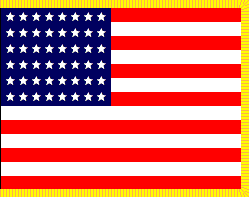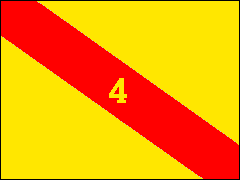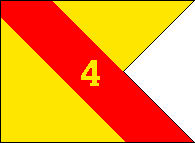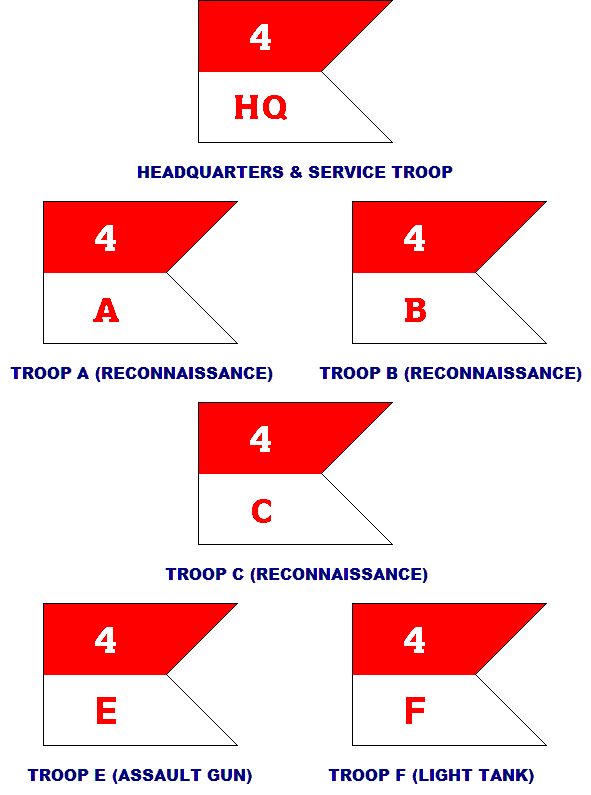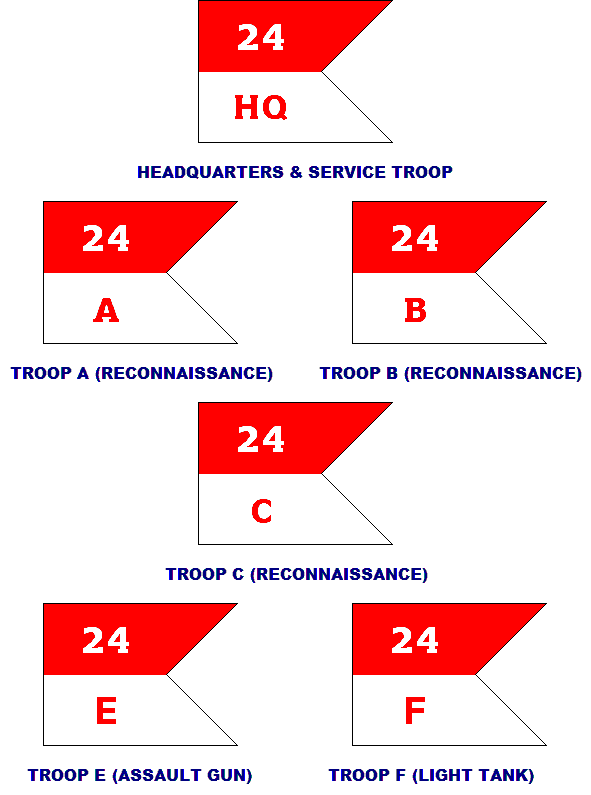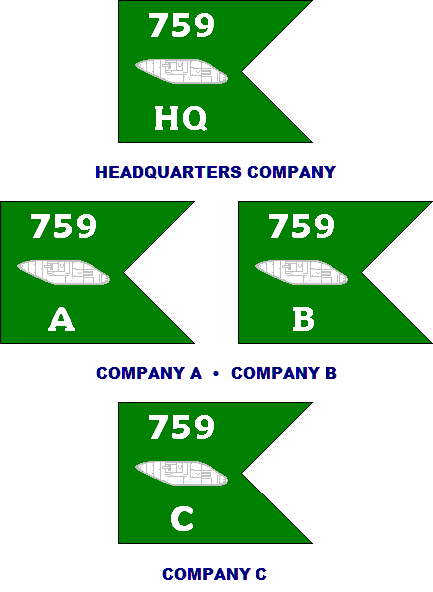THE CAVALRY AT WAR
4th CAVALRY GROUP (MECHANIZED) FLAGS & GUIDONS
1944 Regulations
In 1943 the US Army decided to abolish regimental identities in all branches except Infantry. The former regimental headquarters became group headquarters and their subordinate units became independent battalions. The aim was to increase flexibility by enabling a variable number of units to be controlled by the group HQ. Mechanized cavalry regiments were reorganized in this way to create cavalry groups. In practice, however, the newly independent squadrons remained attached to the group HQ. The former first squadron took the number of the parent group and the former second squadron received a higher number. Cavalry groups later raised, i.e. those with no former regimental identity, also followed this numbering scheme. The squadrons were reorganized to embody three reconnaissance troops, an assault gun troop and a light tank troop. These were lettered A through F with D being skipped. (Separate squadrons assigned to armored divisions had a fourth reconnaissance troop lettered D.) The reconnaissance troops were equipped with M8 armored cars (37mm gun) and jeeps, the assault gun troop had the M8 self-propelled 75mm howitzer (based on the M5 light tank) and the light tank troop had the M5 tank armed with a 37mm gun. Though mechanically reliable, fast and possessing good cross-country performance, the M5 was too lightly armed and armored to match the German armored vehicles in service by 1944. A larger, more heavily armed and armored replacement, the M24 Chaffee with a 75mm gun, was slated to replace the M5, but the war ended before all the light tank companies of the cavalry squadrons could be upgraded.
Additional units were occasionally attached to cavalry groups. Shortly after D-Day the 759th Tank Battalion (Light) of the 3rd Armored Group was attached to the 4th Cavalry Group and remained with it until the end of the war.
The 4th Cavalry Group was still a regiment when it arrived in England in December 1943 and it was reorganized there, eventually being assigned to VII Corps, First Army. The group landed in Normandy immediately after D-Day, participated in the Battle of Cherbourg. took part in the pursuit to the German frontier and subsequent battles, and particularly distinguished itself during the Battle of the Bulge, for which it received a Presidential Unit Citation. Postwar, the 4th Cavalry Group was redesignated as the 4th Constabulary Regiment for occupation duties in Germany, and was inactivated there in 1952.
The 4th Cavalry Group had a National Standard, Service and a Distinguishing Flag, both made of wool bunting, three feet at the hoist by four feet on the fly plus 2 1/2-inch yellow silk fringe for the National Standard, Service. The guidon for the group headquarters troop followed the design of the Distinguishing Flag. The squadrons were entitled to bear silk National and Organizational Standards and it seems likely that the 4th Cavalry Squadron inherited those of the 4th Cavalry Regiment. The 24th Cavalry Squadron should have received its own coat of arms and standard but whether this actually happened is unknown. Troops of the squadrons had red-over-white guidons made of wool bunting, 20 inches at the hoist by 27 3/4 inches on the fly with a 10-inch fork. Centered in the upper half of the guidon was the regimental number; centered in the lower half was the troop designation. For the squadron HHT this was HQ and for other troops it was their letter.
Image Added March 2019
759th Tank Battalion (Light)
